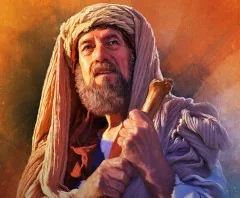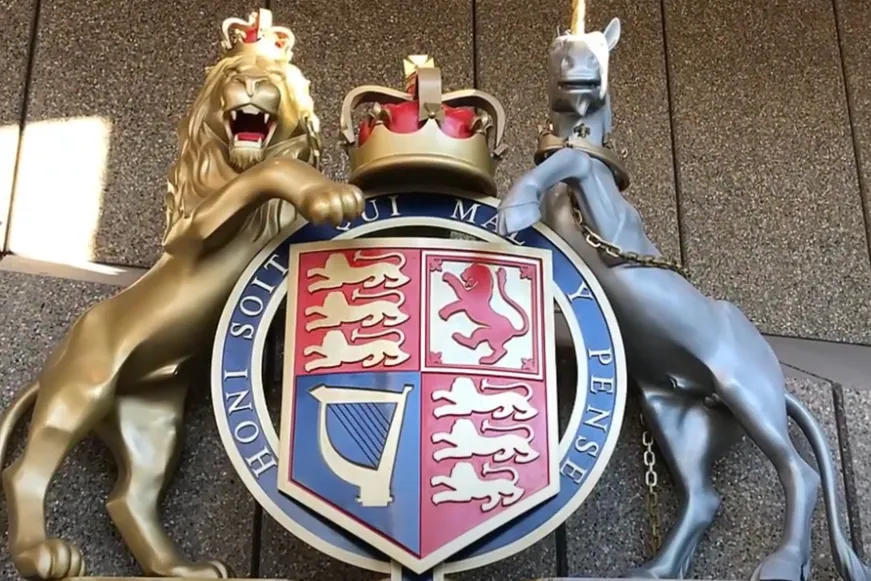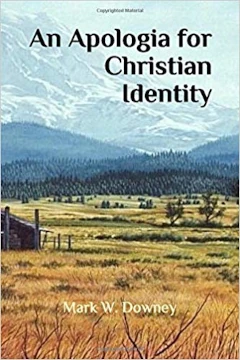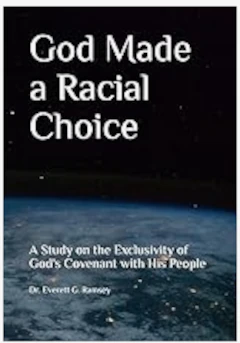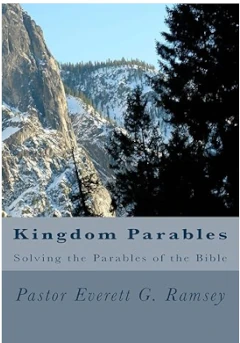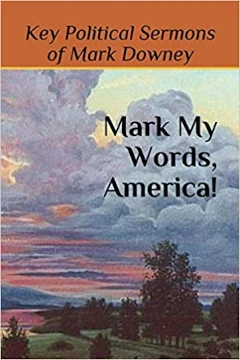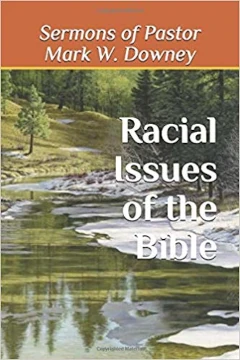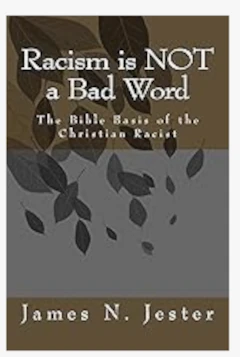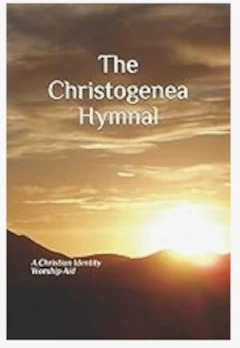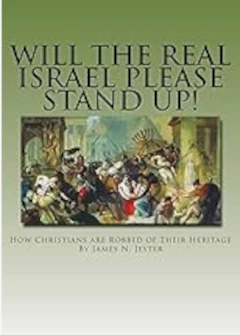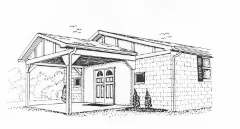Road To Richmond
ROAD OF MEMORIES
By Richard Hoskins
Events are history. Most events revolve about wars and their aftermath. War winners write the history. If one does not have a reason to know better he must accept the victor’s version — there is nothing else he can do. The victor’s version is often twisted or downright wrong.
When a person has lived on the same land as his ancestors for ten generations, the history handed down to him is often different. He has a personal interest in it. A different history results in a different worldview. Not only is his worldview often different — it can be the correct one while the official version is not.
To many, the road to Richmond is just another Virginia two land back-road; trees, creeks, hills, an occasional unworked farm. I know the road and have had reason to travel it countless times. It crosses battlegrounds, a scalping place, a massacre, worked out coal mines, a canal — the list goes on. It seems that every rock and hill has a story. The road is a long memory trail.
Latham’s Battery
On the road to Richmond I drove past the place where the guns of Lathan’s Battery are buried. Along with Lynchburg's 2nd Virginia Cavalry, Captain Latham double teamed his guns and charged through the Yankee army rather than surrender with the Army of Northern Virginia cavalry; 2nd Virginia. They paused long enough to bury their guns somewhere in a creek bed, and then they accompanied the 2nd Virginia to Lynchburg’s Miller Park where they had mustered in ‘61. There they called the roll and disbanded. Our Lynchburg boys never did surrender.
The men of Latham’s Battery were sworn to keep the secret of where the guns were buried. The secret was kept through rough interrogations by union troops and ever since. No one has ever been able to find them. There is supposed to be one man in each generation who passes the secret of where the guns are buried to the next generation. As the story goes — on the day when Virginia once again joins her sister states to fight for their right to exist as sovereign states, the location of the guns will be revealed, the guns retrieved, and will lead the fight for freedom.
Appomattox & Saylor’s Creek
Next, I drove past Appomattox where my great-grandfather, Maj. William Hoskins, Surgeon 59th Va., surrendered in ’65.His name is on the rolls publicly displayed there.
A few miles further on, I passed Saylor’s Creek where Lee’s army, on the way to Appomattox, was cut in two and where Richmond’s government clerks, old men, in their first and last battle ever, gave a “rebel yell” and charged — and drove the enemy back a full mile before falling exhausted to the ground. They were all the reserves Lee had left. Their exhaustion and age prevented them continuing the fight and they were captured lying of the ground unable to rise.
The Empire
The story of the 2nd Virginia Cavalry, Latham’s Battery, Saylor’s Creek and Appomattox, are war stories of defeated survivors who fought against the International Trade Cartel (ITC) and lost. The death of the sovereign states of their conquerors — Michigan, Pennsylvania, New Hampshire, and the rest. Now there was ONE state — the Corporate State of DC. Both conquerors and conquered had been reduced to vassal states at the same time. In 1865, the “United States” ceased to exist and a new state was born — the “Unitedstate”. All Americans became “subject”. But we in the South, as losers, were required to give the extra pound of flesh for having opposed the “inevitable” and lost. It was a lesson that has been repeated and repeated and repeated.
Slavery
In school I was taught that the war was fought over slavery. Since those days I have learned that my mother’s family owned more than a hundred slaves and they were abolitionists. They were “Repatriation Abolitionists”. They wanted to free their slaves, send them back to Africa, and replace them with White workers from Europe. So did Thomas Jefferson and almost everyone else, too. They didn’t tell me about “Repatriation Abolition” in school. Knowing that, the obvious conclusion is that the war was not fought over slavery. Both contestants were against slavery.
Secession
I was also taught in school that the war was fought to “preserve the union.” If that is so, was my ancestor Robert wrong to fight for Virginia to secede from the British Empire? Was it wrong for New England to threaten to secede only a few years before the war broke out?
Virginia voted against secession after Lincoln told them that he had no intention of invading the South. A week later Virginia learned that he intended to invade anyway. Virginia then voted again — this time to secede. Lincoln meant to have his war. Why?
Burning
In school I was told that the reason that Virginia was burned was because it was a military necessity. My older kinsmen told me that almost all Yankee generals actively promoted burning.
Was this a military necessity? What does burning a farm and a mill behind your own lines have to do with military necessity? Hunter burned the whole way when his army marched to Lynchburg. Sheridan burned the great Shenandoah Valley that was already his. Grant burned wherever he went. Sherman burned Georgia, South Carolina and North Carolina. Missouri was burned. The entire Yankee army burned. If it was just a military necessity, only certain places of strategic value would have been burned, but the armies burned wherever they were. So, it had to be “policy”. It was federal policy to burn. Why?
In the past 50 years I learned that the ITC also burned South Africa just like they did here — except they did a more thorough job of it. The establishment armies slaughtered cattle, sheep, and chickens — not for the use of their armies—they slaughtered them and let the carcasses rot in the fields. They burned barns, houses, mills — just like here. They put women and children in concentration camps where they died like flies. They left the great South African farm system a desert. Policy?
Something else. In Germany, in addition to burning every city 50,000 and larger, 11,000,000 Saxons were driven from the great east German farming regions of East Prussia, Silesia, Pomerania and the Sudetenland (million died in the process) and these great farming regions were given to the Slavs. Like the South and South Africa, the Cartel went after the farms. I found that out years after WWII. They didn’t teach it in the schools. This must have been “policy” too.
“Policy” of this kind leads to something — where was it leading. What was its objective?
The War Between The States
The Establishment’s educational system told me that the War Between the States was fought to preserve the union and free the slaves. They didn’t tell me that the war was only a 1st step on the road to somewhere else.
The obvious difference was that — when I drove by 50 years ago there were farms everywhere. Now, I saw only half a dozen working farms in the entire 120 miles to Richmond. The farms that had been burned in the war, revived briefly afterwards, now appeared to be gone for good. What did it mean?
The City
Richmond lay in the distance. Before the War Lynchburg was 18,000, Richmond was 28,000, and the great seaport of Norfolk was 38,000. Now, Richmond was gigantic. Where had all the people come from?
The answer is obvious — I saw almost no one on the road to Richmond and Richmond was full. These tightly packed Richmonders must have come from the deserted surrounding countryside. The land was empty — the city was full. Farmers were now city dwellers. I never understood that before. Another moment’s reflection supplied the reason.
The War Between the States freed the slaves which removed the farm workers. Freeing the slaves without compensating their owners prevented the farm owners from being able to hire White workers from Europe as planned. The Establishment’s radical abolition without compensation destroyed the Southland’s farm system.
However, the people still lived on the land. Families boomed. My great-grandfather who fought in the war had 12 children; my grandfather had 6; my father had 4; I have 6, the most any of my children have is 2. What changed?
The short-lived revival of the small Virginia farm after the war ended when the ITC food-monopoly dumped foreign produce on Virginia’s farm market below the price our Saxon farmers could raise their own. Broke farmers had to go to the city and work for the cartel to feed their families.
I saw few working farms in 120 miles to Richmond. It looked like Scotland when I was there in 1982. Most working farms are gone. The same is true with our Saxon kinsmen in Europe and South Africa. The number of children has dropped below 2 per family…
Habitat
What is this thing that the cartel has against farms? What is so important about Virginia’s self-sufficient farms that every Cartel government wants to destroy them? If one thinks about it long enough the answer jumps out at him: The self-sufficient farm is the natural habitat of the Saxon. On his own farm the Saxon is both a king and a priest. Poor or rich he is his own man. He is an optimist in his thinking. He has lots of children. Off his farm he is just a vassal of someone else…
Caste System
Fifty years ago, we didn’t know about the ITC’s caste system. We didn’t know that ALL kings are hired by and work for the same master. They ALL conspire together. ALL of them are in on it. ALL of them. They were earlier versions of South Africa’s DeKlerk, Rhodesia's Ian Smith, Germany’s Willie Brandt. ALL took the Cartel’s 30 pieces of silver. They were ALL traitors. ALL of them! We didn’t know it.
Senator Byrd began his career “poor but honest”. Virginia’s courthouse books and state office books stood open for inspection by anyone walking in off the street. The Byrd Machine was held up all over the country as an example of honest politics. When he died, “poor but honest” Harry Byrd owned a newspaper, extensive apple orchards, and millions in stocks — all on a politician’s salary.
I thought about all this as I got dressed this morning. I put on my shirt made in Korea, my pants made in Nicaragua, my T-shirt made in China. And, I thought of Lynchburg’s idle textile mills on Cotton Hill, and my ancestors’ farms now owned by strangers’ corporations. Then I remembered Virginia’s politicians who go to DC penniless and return millionaires.
What is there to wonder about? The establishment’s three castes:
- Priests,
- King & Army, and
- Money Managers
— belong to the cartel.
They are bought and paid for. You don’t go to them to help you out of your troubles. They are part of the problem. They lick the hand that feeds them and think that there is no God in heaven and tomorrow will never come. They really believe that God’s Law will never judge them.
We didn’t know all this back then….
———————————————-------------
Note by Pastor Elmore: I had to skip part of this article because of the limitation on space. A couple of pages later, after the last sentence above, Mr. Hoskins said, “Our job is not to convert the world, merely to keep those who are doing something on course. He also said, “Who else is there who can’t stand the lawlessness of the Cartel’s establishment church? Who else besides you ask the Levites embarrassing questions? Who else lives near you who knows as much of God’s WORD as you do? Who else will travel halfway across a continent just to meet with his peer and discuss this and that from the WORD? Just you.
It up to the true church to stand strong and never waver from keeping God’s Laws and commandments.

